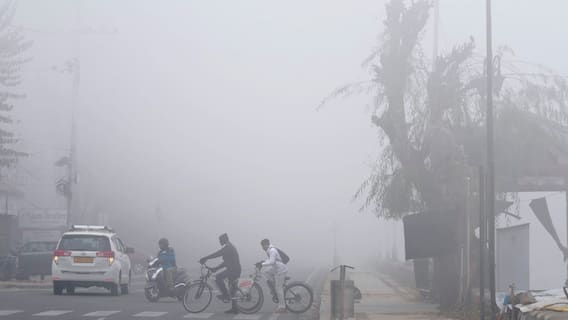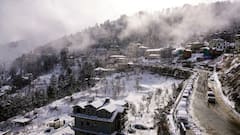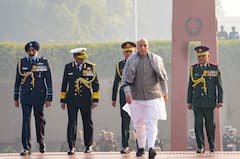Explained: What Is McMahon Line, The India-China Borderline Which Beijing Dismisses, To Claim Arunachal Pradesh
The 1914 McMahon Line, which India considers as its legal national border, runs from the east of Bhutan across the Himalayas and puts the whole of Arunachal Pradesh on the Indian side.

New Delhi: The United States Senate passed a resolution on Tuesday recognising the McMahon Line as the international boundary between China and Arunachal Pradesh and affirming that Arunachal Pradesh is an integral part of India.
Introducing a resolution in the Senate, Senator Bill Hagerty said, “At a time when China continues to pose grave and gathering threats to the Free and Open Indo-Pacific, it is critical for the United States to stand shoulder-to-shoulder with our strategic partners in the region, especially India.”
“This bipartisan resolution expresses the Senate’s support for unequivocally recognising the state of Arunachal Pradesh as an integral part of India, condemning China’s military aggression to change the status quo along the Line of Actual Control, and further enhancing the US-India strategic partnership and the Quad in support of the Free and Open Indo-Pacific,” he said on Tuesday.
The 1914 McMahon Line, which India considers as its legal national border, runs from the east of Bhutan across the Himalayas and puts the whole of Arunachal Pradesh on the Indian side.
China, on the other hand, refuses to accept the line as its boundary.
What is McMahon Line?
Named after Henry McMahon, who was the foreign secretary of British India and the chief negotiator of the convention at Simla, the McMahon Line is the effective boundary between China and India. It was created on March 24 and 25, 1914, in Delhi, as part of the 1914 Simla Convention.
The proposal was signed by McMahon and Lonchen Satra on behalf of the Tibetan Government.
The length of this boundary is 890 kilometres, spanning from the corner of Bhutan to the Isu Razi Pass on the Burma border, largely along the crest of the Himalayas.
Though, India considers the McMahon Line as the legal national border, China rejects it, contending that Tibet was not a sovereign state and therefore did not have the power to conclude treaties.
What Is The Shimla Treaty?
In 1914, delegates from India and Tibet signed the Shimla Treaty to establish a clear demarcation between the two countries. China was not present in this treaty since Tibet was an autonomous region at the time, hence there was no requirement for Chinese representation at the time of this Treaty.
According to the Shimla Treaty, the McMahon Line is the clear boundary line between India and China. The British rulers, on behalf of India, considered Tawang in Arunachal Pradesh and the southern portion of Tibet to be part of India, which the Tibetans consented to.
As a result, Arunachal Pradesh's Tawang region became a part of India.
China's Dual Stand On McMahon Line
China believes that Tibet has always been a part of its territory, so representatives of Tibet are not authorised to accept any agreement without Beijing's consent. China has been claiming its right over the Tibetan territory after it fully occupied it in 1950.
China also claims that because it was not involved in the Simla Agreement and is not legally bound by it.
New agency ANI quotes a report by Professor Amrita Jash, an assistant professor at the Department of Geopolitics and International Relations at the Manipal Academy of Higher Education to explain China's position. In her report, professor Jash states that China rejects the McMahon Line and calls it "illegal" and "unacceptable", because of two reasons. First, the Sino-Indo boundary has never been properly demarcated. "No treaty or agreement has been signed between the Chinese and Indian governments," she says.
Secondly, Beijing believes that the McMahon Line is an imperialist legacy. The ANI report further says that in 1960, China did accept the McMahon Line while signing the Burma-China Boundary Treaty. The Manohar Parrikar Institute for Defence Studies and Analyses seeks to explain this duality in China's stand as: "Though the agreed boundary mostly followed the McMahon Line, the Chinese called it as “customary boundary”. In other words, the Chinese never legally accepted the McMahon Line, but based their negotiations on what they termed as traditional boundary features."
India-China Clash Over Border Demarcation
India and China have been facing off against each other along the 3,440 km-long border in the Himalayan region for a long time. In December last year, Chinese and Indian troops got involved in a skirmish in Arunachal along LAC, the biggest clash between India and China in six years. Some soldiers suffered minor injuries.
In June 2020, the soldiers from the two countries fought with sticks and clubs, not guns, in the first fatal confrontation between the two sides since 1975. At least 20 Indian and four Chinese soldiers died in the clash.
Trending News
Top Headlines






































